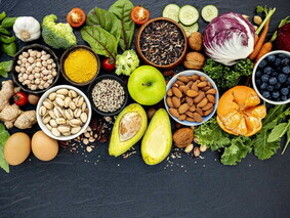
My breast milk: top of the class for nutrition
Breast milk has everything going for it: it meets my newborn baby's nutritional needs perfectly and changes its composition as the months go by and my baby's needs change. And to think that I make it all myself!
By breastfeeding your baby, your are offering them a three-course meal exactly corresponding to the intensive development which takes place in their little body during the first few weeks. In effect, breast milk adapts in real time to your baby's development right from birth. The proof is that women who give birth prematurely produce breast milk which is richer in essential fatty acids in order to meet the premature baby's requirements in terms of cerebral maturation.
The three stages of breast milk
The composition of your milk changes as the days and weeks pass.
First few days: after birth, the baby feeds on a thick, yellowy milk which is easy to digest. This is colostrum, which the mother has been producing since the 2nd trimester of pregnancy. Rich in proteins and antibodies, this liquid constitutes the food of choice for the newborn baby. It also helps the baby to pass their first stools (called meconium). It should be given without moderation, as early as possible. Don't worry about the tiny quantity of colostrum produced (between 20 and 40 ml per feed): it corresponds precisely to the baby's needs at birth.
3rd / 14th day: colostrum gives way to "transitional milk". This is fluid and orangey in colour, lower in proteins and higher in lactose (sugar), lipids (fats) and calcium. This corresponds to what is commonly referred to as your milk "coming in", i.e. you start to produce milk in larger quantities. How will you know this is happening? Your breasts will feel hot and hard, and you may even feel a crackling sensation. Note: the more you breastfeed, the more milk you will have.
At the end of the 2nd week: your milk becomes "mature". It is bluish-white and slightly transparent and contains everything the baby needs to grow: water, proteins, carbohydrates (90% of which is lactose for the development of the brain), lipids (including essential fatty acids), minerals (calcium, iron, phosphorus, etc.) and vitamins from every group. It is recommended to take supplements in vitamin D (during pregnancy) and vitamin K (after childbirth). Check with your GP or gynaecologist.
An all-in-one, a well-balanced meal
Believe it or not, breast milk changes in colour and consistency not only from week to week but also depending on the time of day, and even over the course of a single feed!
Therefore, the milk is highest in lactose in the morning, lipids around midday and proteins in the evening. This is one of the reasons why it is important to let your baby feed on demand in terms of frequency and duration, in order to get the full range of nutrients they need in order to grow.
Your milk also adapts to your baby's changing desires over the course of a feed. At the beginning, the liquid is almost transparent and is particularly rich in water and sugar in order to calm your baby's hunger and thirst. As the baby sucks, the milk becomes thicker and richer in lipids and proteins in order to provide the energy they need in order to grow. By the end of the feed, the level of lipids in the milk has increased four-fold in order to satisfy the little glutton. Thanks to this feeling of fullness, your child will learn to regulate their appetite. For this reason, it is important to let your baby feed until they let go of the nipple themselves, signalling that it is time to move on to the other breast, or simply end the meal!
Breast milk also adapts to the mother's needs
Are you expecting twins? If so, don't worry about your body's capacity to breastfeed two children at the same time. You will produce almost double the quantity of milk. If for some reason you are unable to feed with both breasts, the breast you feed with will double its capacity. As long as you maintain a balanced diet, your milk will be ideally suited to your babies' needs. Note that drinking cow's milk does not increase your own milk production!
The only rule is to let your baby take the lead when it comes to breastfeeding. Have faith in both your baby and in yourself.
Opinion
The World Health Organization (WHO) recommends exclusively breastfeeding a newborn baby, i.e. without giving them any other liquid or food, during the first six months of their life. Since February 2003, the French Ministry of Health , via the National Agency for Health Accreditation and Assessment (Agence Nationale d'Accréditation et d' Evaluation en Santé, or ANAES) has supported this opinion. After six months of age, the WHO advises supplementing breastfeeding up to the age of two.

















